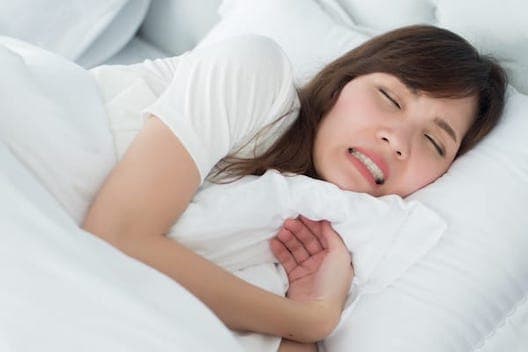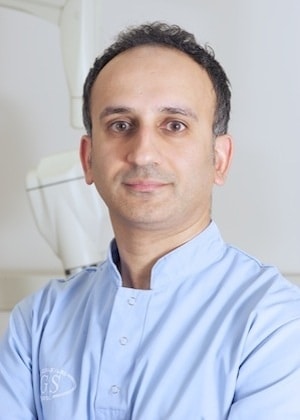Teeth Grinding Treatment West London
Teeth grinding (bruxism) is a widespread problem and prevalent in a broad age demographic.
The reasons for teeth grinding are caused by many different factors. Usually, it is from an accumulation of stress leading to muscle tightness in the jaw which then manifests as involuntary movements of jaw muscles (parafunction) which typically takes place during deep sleep.
These involuntary muscle movements bring the teeth into contact with each other at significant torque levels.
These stresses are far higher than would be associated with normal chewing and eating forces.
Teeth grinding leads to erosion and attrition of the tooth enamel alongside potential overwear of the Tempero-mandibular joint (TMJ).

Teeth Grinding Symptoms and Management
Teeth Grinding Symptoms
- Teeth sensitivity
- Headaches
- Night waking
- Jaw ache
- Restricted mouth opening
- Clicking jaw
- Broken/chipped teeth
- Pain when biting crunchy foods
Passive Management
Initially following a full medical history, it’s useful to begin a programme of massage and physiotherapy of the jaw muscles. We advise focusing on the masseter muscle, which has connections from the jaw joint to the neck. Ultrasound is very useful as a first port of call as it is very gentle, alongside manual manipulation and possibly acupuncture. Breathing exercises are an excellent adjunct to this which can be incorporated as part of yogic practices or Pilates to improve posture, which helps ‘release’ the jaw muscles.
Active management
Passive and active management generally go hand in hand. This usually involves an assessment of the ‘bite’ (occlusal analysis) to see if there are any teeth which have an awkward contact or cause the other teeth to ‘slide’ when they come into contact. This ‘interference’ could potentially exacerbate the bruxism and need some adjustment with very careful tooth filing.
Following this analysis, a mouthguard would be made for wearing at night time. These come in various forms, including soft rubber mouth guards, Nti or Mci splints or full arch acrylic guards in the form of Michigan (upper teeth) and Tanner (lower teeth) splints.
The purpose of the mouthguard should be to stop the teeth meeting together but also to ‘de-programme’ the TMJ joint so it ‘forgets’ it’s grinding position and adopts the original more relaxed position.
Ultimately this reprogramming of the TMJ will hopefully result in a break in the routine nature of the mechanism leading to a relaxed jaw and a decrease, if not a complete halt of the teeth grinding.
The effect can be reinforced by a series of hypnotherapy or Cognitive Behavioural Therapy (CBT) sessions. These sessions explore the sources of any physiological stress and empower the patient to manage this stress with specific tools and techniques.


